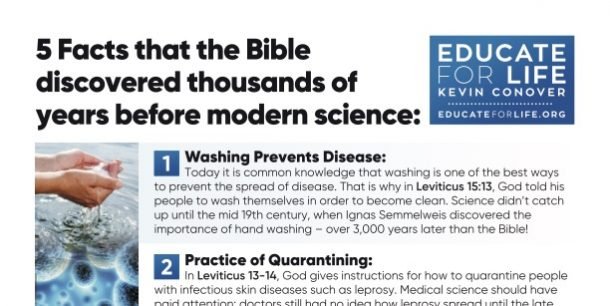Tuesday, October 15, 2013
How Could Noah Fit the Animals on the Ark and Care for Them?—Part 1
The following is an excerpt from The New Answers Book 3 by John Woodmorappe, and can be viewed on AnswersInGenesis.org.
According to Scripture, Noah’s ark was a safe haven for representatives of all the kinds of air-breathing land animals and birds that God created. While it is possible that God made miraculous provisions for the daily care of these animals, it is not necessary—or required by Scripture—to appeal to miracles. Exploring natural solutions for day-to-day operations does not discount God’s role: the biblical account hints at plenty of miracles as written, such as God bringing the animals to the ark (Genesis 6:20; 7:9, 15), closing the door of the ark (Genesis 7:16), and causing the fountains of the deep and the windows of heaven to open on the same day (Genesis 7:11). It turns out that a study of existing, low-tech animal care methods answers trivial objections to the ark. In fact, many solutions to seemingly insurmountable problems are rather straightforward.1
How Did Noah Fit All the Animals on the Ark?
To answer this question, we must first ask how many animals were actually on the ark. Critics have fantasized the presence of millions of animals overloading the ark. In actuality, the Bible makes it clear that the cargo was limited to land breathing vertebrate animals—corresponding to modern birds, mammals, and reptiles, as well as their extinct counterparts.
Was every species on the ark? No! From chapters such as Leviticus 11, it is obvious that the created kind (min in Hebrew, in Genesis 1:11–12, 21, 24–25) was a much broader category than the modern term of classification, species. Current baraminological2 research suggests that the created kind most closely corresponded to the family level in current taxonomy. However, to be conservative in this study, the genus was set as equivalent to the original created kind. As for the clean animals that entered the ark in seven pairs, this added a modest number of additional animals, notably bovids (cow-like mammals) and cervids (deer-like mammals). Under these conservative assumptions, there were no more than 16,000 land animals and birds on the ark.
According to the Bible, the ark had three decks (floors). It is not difficult to show that there was plenty of room for 16,000 animals, assuming they required approximately the same floor space as animals in typical farm enclosures and laboratories today. The vast majority of the creatures (birds, reptiles, and mammals) are small. The largest animals were probably only a few hundred pounds of body weight.
It is still necessary to take account of the floor spaces required by large animals, such as elephants, giraffes, rhinos, and some dinosaurs. But even these, collectively, do not require a large area. God would likely have sent to Noah young (and therefore small, but not newborn) representatives of these kinds so that they would have a full reproductive potential for life after the Flood to repopulate the earth (Genesis 7:1–3). Even the largest dinosaurs were relatively small when only a few years old.
Without tiering of cages, only 47 percent of the ark floor would have been necessary. What’s more, many could have been housed in groups, which would have further reduced the required space.
What about the provisions for the animals? It can be shown that the food would have filled only 6 to 12 percent of the volume of the ark, and the potable water only an additional 9 percent of the same.3
What About the Dinosaurs?
There are only several hundred genera of dinosaurs known. What’s more, the continuous invalidation of old names largely offsets the continuous discovery of new kinds of dinosaur genera.4 Only a modest fraction of all dinosaurs reached giant size. About 16 percent of dinosaur genera had an adult weight in excess of ten tons, and almost half of dinosaur genera weighed no more than a ton when mature.
However, the foregoing is academic because dinosaurs could have been represented as young. Interestingly, according to the most recent models of dinosaur maturation, even the largest sauropod dinosaurs were no more than several hundred kilograms in weight by the time they were just over a year old,5 which could have corresponded to their time of release from the ark.
What Did the Dinosaurs Eat?
Dinosaurs could have eaten basically the same foods as the other animals. The young representatives of the large sauropods could have eaten compressed hay, other dried plant material, seeds and grains, and the like. Carnivorous dinosaurs—if any were meat-eaters before the Flood—could have eaten dried meat, reconstituted dried meat, or slaughtered animals. Giant tortoises would have been ideal to use as food in this regard. They were large and needed little food to be maintained themselves. There are also exotic sources of meat, such as fish that wrap themselves in dry cocoons.

Figure 1. This is a cross-section view of a possible design of the interior of the ark. The proposed skylight roof could be opened. This might be the covering when “Noah removed the covering of the ark” (Genesis 8:13).
How Were the Animals Cared For?
Anti-Bible critics have compared the challenges of caring for the animals with that of modern zoos. This is fallacious. We must distinguish between the long-term care required for animals kept in zoos and the temporary, emergency care required on the ark. The animals’ comfort and healthy appearance were not essential for emergency survival during one stressful year, where survival was the primary goal.
Studies of non-mechanized animal care indicate that eight people could have fed and watered 16,000 creatures. The key is to avoid unnecessary walking around. As the old adage says, “Don’t work harder, work smarter.”
Therefore, Noah probably stored the food and water near each animal. Even better, drinking water could have been piped into troughs, just as the Chinese have used bamboo pipes for this purpose for thousands of years. The use of some sort of self-feeders, as is commonly done for birds, would have been relatively easy and probably essential. Animals that required special care or diets were uncommon and should not have needed an inordinate amount of time from the handlers. Even animals with the most specialized diets in nature could have been switched to readily sustainable substitute diets. Of course, this assumes that animals with specialized diets today were likewise specialized at the time of the Flood. But that may not have been the case in the ancestral kinds that were taken on the ark.

Figures 2 and 3. With Noah being over 500 years in age, it would make sense that he had the knowledge to be able to incorporate automatic feeding and watering systems where they only had to be refilled occasionally.
Animals with Special Diets
Many challenges to the reliability of the biblical account of Noah’s ark, based on animals’ feeding requirements, are steeped in mythology. Do captive anteaters necessarily require ants? No! Neither do most insect-eating animals require insects in their diet. Nor do most animals that eat only live prey in nature necessarily require moving prey in captivity. (For the few that do, it would not have been difficult to provide a rudimentary live-animal feeder.)
Even the most “fussy” animal kinds today contain individual representatives that can depart from the foods their kind normally eats in nature. For example, although most koalas eat nothing but fresh eucalyptus leaves, there are individual koalas that will subsist on dried eucalyptus leaves. Likewise, some individual pandas will accept dried bamboo stalks.
Footnotes
1. Baramin is a term coined by creation scientists to describe the original created kinds. It comes from the Hebrew words bara (meaning “create”) and min (meaning “kind”).
2. For an in-depth, documented discussion of this and related topics in language that is understandable to lay people and students, see John Woodmorappe, Noah’s Ark: A Feasibility Study
3. Woodmorappe, Noah’s Ark: A Feasibility Study, p. 17–21, 95–98.
4. M.J. Benton, “How to Find a Dinosaur, and the Role of Synonymy in Biodiversity Studies,”Paleobiology 34 no. 4 (2008): 516–533.
5. T.M. Lehman and H.N. Woodward, “Modeling Growth Rates for Sauropod Dinosaurs,”Paleobiology 34 no. 4 (2008): 264–281.

